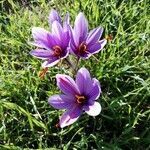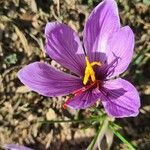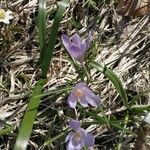| Therapeutic use
|
Abortifacient agents (flower), Amenorrhea (flower), Analgesics (flower), Anemia (flower), Anti-infective agents, local (flower), Anti-inflammatory agents (flower), Antimutagenic agents (flower), Antineoplastic agents (flower), Antirheumatic agents (flower), Appetite stimulants (flower), Asthenopia (flower), Asthma (flower), Bronchitis (flower), Cardiotonic agents (flower), Colic (flower), Common cold (flower), Cough (flower), Depressive disorder (flower), Dysmenorrhea (flower), Encephalitis (flower), Epilepsy (flower), Eye diseases (flower), Fever (flower), Headache (flower), Heart diseases (flower), Hepatomegaly (flower), Hypnotics and sedatives (flower), Intestinal diseases (flower), Leukorrhea (flower), Freckles (flower), Menstruation-inducing agents (flower), Migraine disorders (flower), Muscular dystrophies (flower), Neoplasms (flower), Neuralgia (flower), Parasympatholytics (flower), Pharyngitis (flower), Premenstrual syndrome (flower), General tonic for rejuvenation (flower), Scorpion stings (flower), Sinusitis (flower), Skin diseases (flower), Snake bites (flower), Stress, physiological (flower), Urination disorders (flower), Urologic diseases (flower), Vomiting (flower), Wounds and injuries (flower), Poliomyelitis (fruit), Antioxidants (plant cells/culture), Fever (tuber), Abortifacient (unspecified), Anodyne (unspecified), Antispasmodic (unspecified), Aphrodisiac (unspecified), Balsamic (unspecified), Blood (unspecified), Cancer (unspecified), Cardiotonic (unspecified), Carminative (unspecified), Cataplasm (unspecified), Catarrh (unspecified), Cold (unspecified), Diaphoretic (unspecified), Emmenagogue (unspecified), Fever (unspecified), Fright (unspecified), Gastrotonic (unspecified), Hepatitis (unspecified), Hepatomegaly (unspecified), Hysteria (unspecified), Measles (unspecified), Megalospleny (unspecified), Melancholy (unspecified), Menoxenia (unspecified), Narcotic (unspecified), Nervine (unspecified), Poison (unspecified), Puerperium (unspecified), Resolvent (unspecified), Sclerosis (unspecified), Sedative (unspecified), Shock (unspecified), Skin (unspecified), Spasm (unspecified), Spice (unspecified), Stimulant (unspecified), Stomachic (unspecified), Sudorific (unspecified), Tumor(Abdomen) (unspecified), Antiseptic (unspecified), Depression (unspecified), Fatality (unspecified), Fear (unspecified), Expectorant (unspecified), Amenorrhea (unspecified), Analgesics (unspecified), Antiemetics (unspecified), Antifungal agents (unspecified), Anti-infective agents, local (unspecified), Antineoplastic agents (unspecified), Antioxidants (unspecified), Aphrodisiacs (unspecified), Appetite stimulants (unspecified), Ascites (unspecified), Asthma (unspecified), Atherosclerosis (unspecified), Bronchitis (unspecified), Depressive disorder (unspecified), Diuretics (unspecified), Dysmenorrhea (unspecified), Epilepsy (unspecified), Flatulence (unspecified), Galactogogues (unspecified), Gastrointestinal diseases (unspecified), Headache (unspecified), Hemorrhoids (unspecified), Hypnotics and sedatives (unspecified), Inflammation (unspecified), Kidney diseases (unspecified), Laryngeal diseases (unspecified), Laxatives (unspecified), Leukorrhea (unspecified), Menstruation-inducing agents (unspecified), Muscle development (unspecified), Narcotics (unspecified), Parasympatholytics (unspecified), Premature ejaculation (unspecified), General tonic for rejuvenation (unspecified), Skin diseases (unspecified), Splenic diseases (unspecified), Uterine contraction (unspecified), Whooping cough (unspecified)
|



